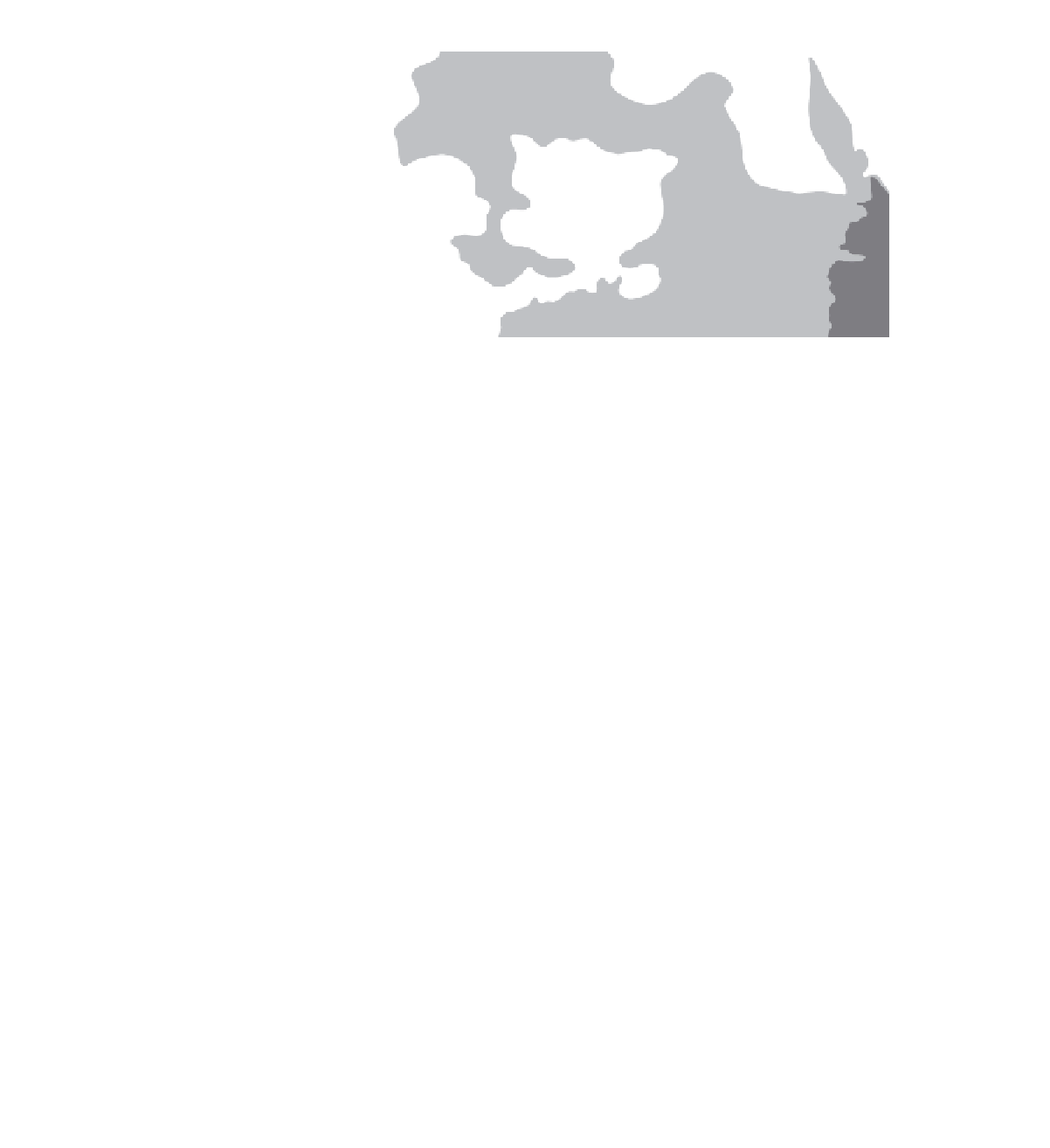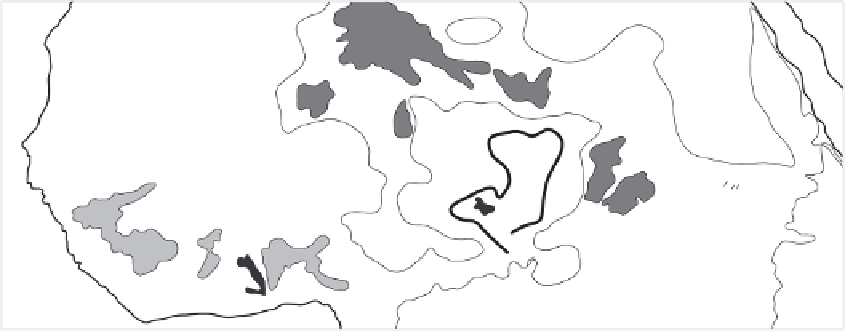Geoscience Reference
In-Depth Information
20°W
10°
0°
10°
20°
30°E
1
10
10
a)
Hoggar
Hoggar
Plateau
Hoggar
Plateau
6
6
2
2
7
7
Plateau
20°
1
1
1
10
10
20°
4
4
1
14
3
3
1
11
11
14
5
5
8
8
1
12
12
Tombouctou
9
9
1
1
13
1
15
15
Khartoum
1
17
17
MEGA
MEGA
CHAD
MEGA
CHAD
1
16
16
Daffur
CHAD
Lake
1
18
18
Lake
Chad
Lake
Chad
10°
N
1
18
18
1
19
19
Chad
10°
Ethiopian
Ethiopian
Highlands
Ethiopian
Highlands
Highlands
B
0
1000 km
RELIEF:
ACTIVE DUNE SYSTEMS
FIXED DUNE SYSTEMS
1. North Mauritanian Ergs
2. Erg Chech - Adrar
3. Erg El Mréyé
4. Erg Timbouctou
5. Erg Bilma - Ténéré
6. Edeyen Murzuq
7. Erg Rebiana
8. Erg Foch
9. Erg Djourab
10. Great Sand Sea
11. South Mauritanean Ergs
12. Trarza and Cayor Ergs
13. Aoukâr and Aklé
14. Erg Azouad
15. Erg Gourma
16. West Azouak
17. East Azouak
18. Erg Kanem
19. Sudan Qoz
Active dunes
Very limited activity
and fixed dunes
1000m
400m
150mm annual isohyet
Shoreline of Palaeolake Mega Chad
Figure 17.4
The distribution of active and fixed sand seas in the Sahelian-Sahel belt of Africa. Note that the degree of
activity/inactivity is not considered (after Grove, 1958, and Grove and Warren, 1968).
17.3.1
Sand sea development
of bedrock may contribute material for sand sea devel-
opment (e.g. in the eastern Namib Sand Sea; see Besler,
1980), but fluvial, lacustrine and coastal sources are the
principal locations from which sediment is derived by
the wind and moved towards areas where sand seas can
accumulate (Lancaster, 1999).
Aeolian transportation sorts sediment effectively, so
that usually over 90 % of particles in active sand seas are
sand-sized. Finer silt, possibly generated by the grain-on-
grain impact of sand in transport is commonly transported
out of the desert aeolian system in suspension, where it
may contribute to loess deposits (Crouvi
et al.
, 2008). Clay
is normally only transported by the wind in pellets, which
then saltate and creep like the more familiar quartzose
sands (Bowler and Wasson, 1984; Al Janabi
et al.
, 1988).
Dare-Edwards (1984) has called such deposits
sand loess
.
Sand may move between source areas and sand seas
along preferred transport pathways. In some areas, such
as the Mojave Desert in California, these pathways may
cross drainage basins and divides prior to accumulation in
sand seas (Zimbelman, Williams and Tchskerian, 1994).
The highest rates of sand transport occur across the dune-
less sand sheets and stringers, which often lead into areas
of sand seas with dunes (Sarnthein and Walger, 1974, give
a range of 62.5-162.5 m
3
/m width per year for Maurita-
The formation of a sand sea is contingent on sedi-
ment availability and aeolian transport capacity. Kocurek
(1999) breaks these conditions down further such that the
sediment issue is considered both in terms of its sourcing
(which he confusingly terms 'supply') and its availability
to the wind - i.e. just because suitable sediment exists,
it may not be available to the wind until, for example,
vegetation cover declines or sediment in a lake is exposed
by declining water levels. Overtime, it is the interaction
between supply (
senso
Kucurek), sediment availability to
the wind and the transport capacity of the wind that deter-
mines whether a sand sea is stable, accumulating or de-
grading. Simply put, sand sea construction occurs when a
large supply of sediment is available to wind of sufficient
energy to transport it to a place where transport energy
is reduced and deposition occurs. These conditions may
vary over time (Figure 17.5) at a range of scales, such
that climate cycles may affect both wind energy and the
availability of sediment on the ground.
17.3.2
Sediment supply in sand seas






